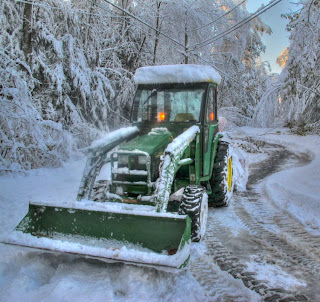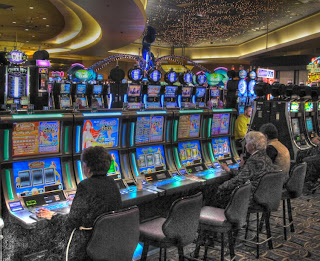Photographing the Volcano
Earlier this week the New York Times and other media outlets
ran a story about something remarkable happening on the island of Hawaii. For the past month, lava has been flowing
from the volcanic vent at Puʻu ʻŌʻō. The
flow was coming to the surface at the Kamokuna coast where it was building new
land as it entered the sea.
 |
| 61G lava flow entering ocean at Kamokuna (c) John Elder Robison |
That spectacular but ordinary process became extraordinary when
a big chunk of newly created cliff face collapsed into the ocean. On New years Eve the cliff fall exposed a lava tube that led seven miles from Puʻu ʻŌʻō, and it began streaming red-hot liquid rock as if
from a fire hose. Video in the Times
showed lava arcing downward sixty-some feet into the ocean below, where it
exploded in spectacular fashion.
The Times story made such an impression on me that I
resolved to go there and see it for myself.
I packed a Nikon D5 camera with an 80-400 lens, and set off on
the journey. There are three ways to see
Hawaiian lava as it flows into the ocean.
You can take a helicopter, which gives an aerial perspective and allows
access to remote sites. You can hike to the lava, but this flow was emerging
from a newly formed and unstable cliff, and could not be approached closely on
foot. The final option is to take a boat.
There are several groups offering lava boat tours in Hawaii.
Vessels range in size from skiffs that carry six passengers to 50-seaters with
rows of seating like a tour bus. If you
are a serious photographer the only choice is a small boat for the unrestricted
views. The charter I took was operated
by Kalapana Cultural Tours, a group I recommend based on their attitude, knowledge, and seamanship skills.
Tours run from pre-dawn to after dusk, weather
permitting. The launch site is about 14
miles from the lava flow and the trip out and back can be rough. Luckily this trip wasn’t – it was as smooth
as an ocean passage can be. Our boat had
a captain and crewman, and seats for six passengers. It was 22 feet long and powered by two
outboards. Everyone climbed aboard while
the boat was on its trailer and we launched fully loaded as there are no docks
to tie up to at Isaac Hale Beach.
My own boating experience led me to choose the 5AM departure
as the seas are usually smoothest before dawn, and the contrast of the lava and
dark would be striking. After being
dropped in the water we headed southwest along the dark coast. Traveling a few hundred yards offshore the
water was already 300-350 feet deep.
Thanks to that the swells were minimal, even as they reared up and broke
on the rocks of the shore with considerable ferocity.
The glow and steam plume from the lava entry was visible several
miles away, and everyone got ready as we approached. We arrived in darkness and the view was
simply stunning. Lava streamed from the
cliff face just as the news stories had shown.
It was impressive in the news and the actuality of it was even more
incredible.
The whole scene was lit by the flickering fiery strand of
lava. Sometimes it glowed like the filament
of a clear lightbulb. At other moments it was shrouded in a glowing mist of
steam. There was a constant roar punctuated
by the pops of steam and lava explosions.
The lava was some 2,000 degrees when it hit the water, which was
over 100 feet deep even right next to shore.
To the right of the lava flow a huge crack was visible in
the cliff face, reaching from the top all the way down to the water. Being mindful of that our captain kept his
engines running and faced the boat out to sea in case we needed to make a quick
escape. This also afforded us a
near-perfect viewing platform.
To shoot the pictures below I used manual mode after spot
metering for the glowing lava. Shutter
speed was set at 1/500 to give sharp images from a moving boat, and I used
image stabilization in active mode. By
exposing for the lava most of the scene looked black on the raw images but with
a high-performance camera you can push the background 4 stops in developing. That’s usually your best bet. If you go
brighter and expose for the overall scene the lava will be burned out and there
is nothing to be done for that overexposure.
Shortly after we arrived the bigger boats appeared on the
scene. They ventured in closer to the
lava, but our own captain was wary of that because of the obvious danger of
cliff collapse. Images of those boats
between the lava and us gave a nice sense of perspective and drama. Luckily nothing fell on them.
There were explosions every few seconds as chunks of the
lava reacted violently with the seawater.
I successfully captured several blasts on camera. You can do that in single shot mode if you
are fast (I have a lot of practice catching those moments in performance
photography) or you can use a continuous shutter at the expense of a great many
wasted shots.
From what I saw most photographers were using 70-200 lenses
but the greater reach of my 400 gave these shots a unique perspective. I’ve found the same thing photographing music
performers where the 70-200 is the typical professional’s go-to lens. The first version of the longer Nikon lens
was terrible because it lacked a focus motor and was too slow to focus at all
in low light. The current version
performed flawlessly, and it has replaced my own 70-200 in most places.
One benefit of using professional gear is that it’s more rugged
and weather resistant. Both those attributes are important when getting banged
around on a small boat. The smoothest of
boat rides still involve considerable bouncing. Waves hit the boat and produce
spray, and you may also get soaked traveling to and from the flow. It’s a good idea to protect your gear and wipe
it down afterward.
Waterproof cameras are obviously available but the common
ones are simple point-and-shoot devices that will not be much use in a
challenging photographic environment like this.
Hawaii is warm all the time at sea level, but it’s cool out
on the water and we were glad for good windbreakers. We were also blessed with a clear night and
calm seas, without which none of these photos would have been possible.
When the lava hits the sea, it produces steam with a high
concentration of hydrochloric acid. This acidic brew is toxic to breathe and
will etch and damage your camera gear in very short order. The steam is also scalding hot, as is the
seawater near the ocean entry. Those are
good reasons to stay back from the flow and be very vigilant to changes in
winds or sea state. Also, be sure your
lenses have clear filters screws down tightly.
If they get acid etched they can be easily replaced, where the
underlying lenses cannot.
There is nowhere else in the world that lava is flowing in a
stream like this. To reach the ocean the lava flows in tubes down from the crater. In this case the crater is seven miles northwest on the Kilauea mountainside. That crater is only visible from a helicopter at this time but you can also look in on it via the webcams of the Hawaii Volcano Observatory. This shot shows the main crater on Kilauea, which you can drive up and see in the National Park.
 |
| Halema‘uma‘u crater as seen from visitor center (c) John Elder Robison |
 |
| Lava boils in Halema‘uma‘u crater, Feb 3, 2016 (c) John Elder Robison |
Seeing the lava stream was truly a
once in a lifetime experience and well worth the trip. It’s also a welcome break for those of us who
live with New England winters.
John Elder Robison
***
The opinions expressed here are his own. There is no warranty expressed or implied. While reading this essay may give you food for thought, actually printing and eating it may make you sick.












Comments
เย็ดสาว